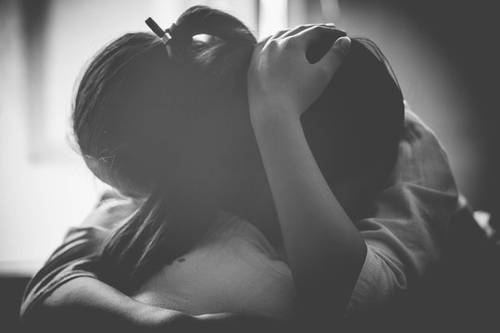Black eyes, pale skin, no sin.
Let us take a closer look into the lives of people fascinated by the dark elements of the world.
In a country where Bollywood and celebrity worship have become a culture, there lies another sub-culture hidden behind the veils of society. Art transpires to be the only way of expressing their macabre self. Generally portrayed with black clothing, tattoos, and piercings, Goth is one of the most recognized sub-cultures in the world, dating back to as far as the 1980s. Let us take a closer look at a community that embraced the darkness within themselves.
A walk-through history
The gothic subculture is very intricate and is still evolving. Primarily, the term ‘Goth’ comes from Visigoths, a title used to refer to Germanic people who invaded the Roman Empire in the 3rd to 5th centuries. Since then, the term goth was used as a derogatory term to describe architecture and literature inspired by them. However, in the 1980s, a new wave of goth rock bands started coming into existence in the underground music scenes of the United Kingdom and other European countries. Goth referred to a style of music with an appreciation for the morbid side of life. Bands like The Cure, Siouxie and the Banshees, Joy Division, Bauhaus Ghosting, and London After Midnight became notable names in shaping the whole Gothic revolution. Currently, this diverse sub-culture is so popular in the underground scenes of the United States and other European countries that there are stores, pubs, and villages exclusively for goths.
Reframing life
“Being goth is like a spectrum and there isn't any specific way to be goth. For some, it could mean being a fan of classic horror flicks or old-school post-punk music. For others, it may be portraying their personality through their way of dressing. Being goth just means you are part of a group of people with unconventional tastes, and a love for the dark, morbid and romantic. (sic)” says Nirrhit, a Bengaluru-based Goth follower.
To Bhumi, a gothic makeup artist based in Uttar Pradesh, being gothic is just to have an appreciation for the rich music of the goth scene, its history, and its community. They add, “Many people tend to water down this beautiful subculture only to Aesthetics and dark fashion, which is wrong. Dark Fashion and aesthetics are just one part of the subculture. Goth music, gothic art, and literature are what have been binding this subculture and gothic community throughout the world together for 4 decades as of now. (sic)”
Art as a way of expression
“Music has always been my biggest motivator to express myself. Goth music has helped me go through many lows in my life. It feels better to know someone feels the same as you and looks at the world with the same lens as yours when you find a band you can vibe with” says Bhumi. He is also a musician who creates Goth music inspired by Indian classical music. For Nirrhit, makeup plays a bigger role in self-expression. He says, “You can experiment with identity and gender through it which is fascinating to me. As a trans person, it was quite necessary for me to have makeup as an option when I was in the early days of questioning.”
Social media comforts
Social media has sometimes been the only way people can express themselves or even learn about the goth culture. “Without social media, I wouldn’t have a clue about being goth. You see people who dress in a different way and you like it so you start experimenting as well. Social media spreads creativity and inspiration. People inspire me and I inspire people. It’s a circle of flowing artistry. (sic)” Nirrhit says. Nirrhit owns an Instagram page where he flaunts his inner self through makeup and fashion.
The gothic scene in India is picking up and people are becoming more open to other subcultures. Indian Goths are breaking stereotypes and setting new standards for beauty in our conservative society. Bhumi further adds that mainstream media has always associated gothic culture with white people. “There have been many BIPOC (Black, Indigenous, and People of Colour) bands throughout history and in the present which have helped the goth scene in shaping and developing as it is now. Believing goth is only for white people erases the hard work of thousands of BIPOC goth artists worldwide. Fashion and Makeup are just tools to express your dark, gothic and macabre self. I love to include my cultural elements with gothic fashion, to let the world know Indian goths exist too and we don’t need to fit into “White Goth type standards” while also celebrating my culture and roots through my makeup.”





